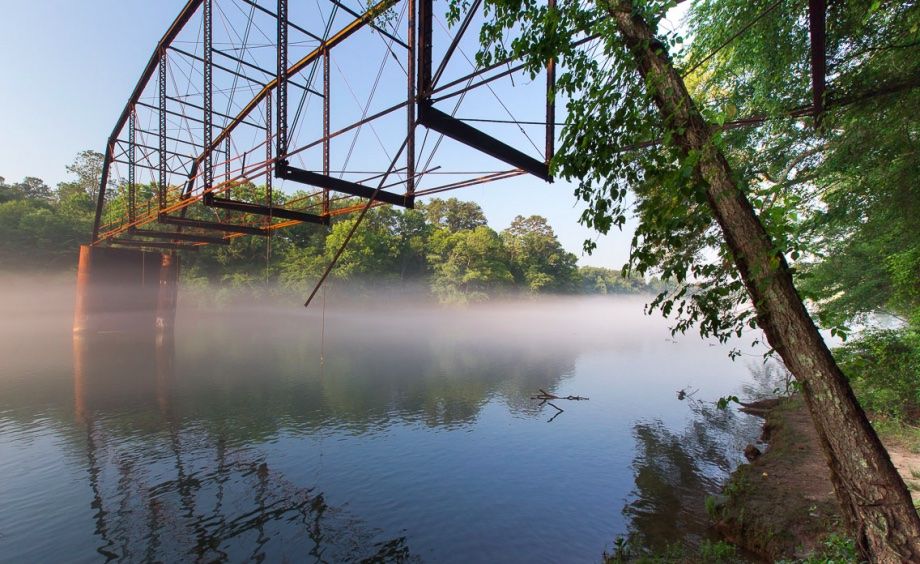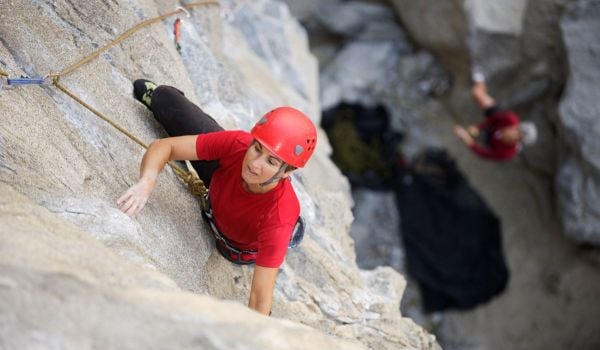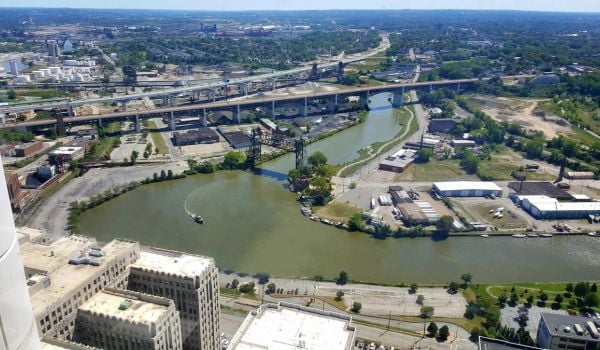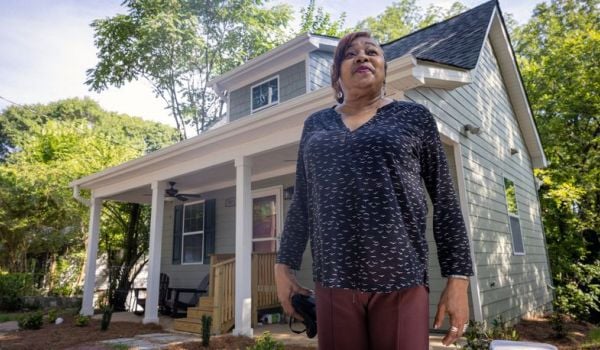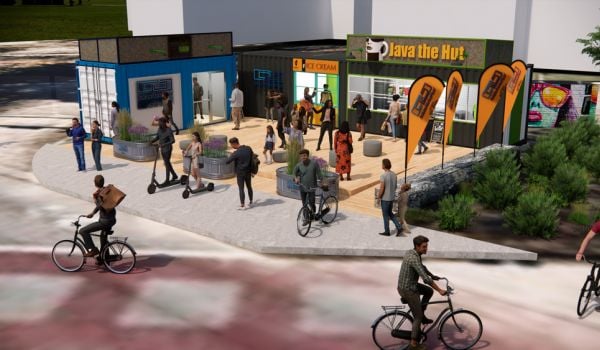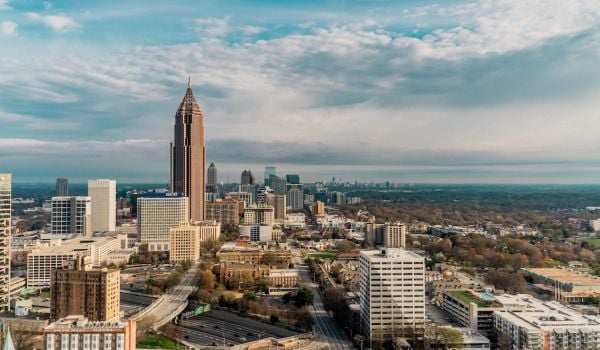The Seine, the Chicago River, the San Antonio River and many more city waterways have undergone makeovers in recent years, sprouting walkways and restaurants, new parks and businesses. They’ve all been touted as reclamation projects of sorts: These rivers run through the heart of their cities, visible but often polluted, the urban fabric having turned its back on them.
Atlanta’s river is a little different. In fact, most probably don’t know a river runs through the city at all. That’s challenge number one for Chattahoochee Now, a nonprofit aiming to reclaim a 53-mile stretch of the Chattahoochee River as part park, part urban waterfront, part recreational waterway. This week, the nonprofit released its vision for the river, jointly authored by Ryan Gravel, who originated the idea for the Atlanta BeltLine, an old railroad corridor turned multiuse path circling Atlanta
The Chattahoochee River runs from northeast of Atlanta to southwest of it, about 6 miles west from downtown. But when Jodi Mansbach opened up a map and saw that big river, “no one could really tell me anything [about it],” she says. They told her about the Chattahoochee River National Recreation Area, about a half hour north of the city, but didn’t know where it went when it reached the city of Atlanta. Mansbach started to poke around the neighborhoods on the city’s west side and found herself stuck in dead-ends and cul-de-sacs, surrounded by industry.
“I discovered that they were right,” she says. “There was really nowhere that I could see the river, walk on the river, let alone get a boat on that river.” And yet, whenever she did manage to get on its banks, she found other people who had found their way and were enjoying the river too.
So she, along with developers Steve Nygren and Walter Brown, founded Chattahoochee Now. Other nonprofits, including Chattahoochee Riverkeeper, had already been working to eradicate pollution on the river, so Chattahoochee Now set out to create 20 new access points. That’s one of the four near-term goals proposed in Vision 53, the recently released visioning document. Gravel was brought on to help author it, Mansbach says, because “there’s no one who knows more about an underutilized resource right under your nose and how much it can become a central part of our city just by reimagining it.”
But the Chattahoochee is a whole different animal from the BeltLine. For starters, despite development along its banks on some stretches, it’s a natural infrastructure, not a manmade one. It’s 53 miles long, compared to the BeltLine’s 22 miles, and winds through multiple jurisdictions, often as the boundary between two counties. The Chattahoochee is also farther from the center of the city.
“This is not the L.A. River or the Chicago River or the Seine in Paris,” says Gravel. “There’s an expansiveness to it, there’s a wildness to it, so even though you’re very close to the city, the adventurous quality or potential to it is really sort of limitless.”
Vision 53, which is more brainstorm than plan, proposes preserving that feeling of expansiveness. This is no 53-mile walkway lined with restaurants and hotels. Instead, the nonprofit imagines a 5,000-acre “working park” made up of interconnected nodes: parks, farms, nature preserves, landscapes for large-scale art, access points for boating and more. The types of amenities will be tied to their location on the river, which starts out more developed in the north and gets progressively more rural as its moves downstream.
Already, Atlanta officials, including the mayor and several city council members, are working with property owners to gain the necessary easements on the city’s section of river, thanks to advocates who had been calling for a riverfront project for years. Right now there’s just one park on the Chattahoochee within Atlanta city limits, and because of its proximity to the city’s water intake plant, it had been closed for security purposes for several years.
Now, one of the priority projects for the Chattahoochee is a more traditional urban river walk on 5 miles of Atlanta’s portion of river. Andre Dickens, Atlanta council member at large, says interest in the project is high within city government. He’d like to see all the traditional amenities — benches, trees, educational signage — and some historical context too. Atlanta’s portion of the river includes the remains of the Chattahoochee Brick Co., where convicts, most of them black, labored under inhumane conditions during Reconstruction, a history detailed in the Pulitzer Prize-winning book Slavery by Another Name. It’s a history “we need to acknowledge,” Dickens says.
Only a small section of the project is within the city of Atlanta itself, though, and many of the other affected jurisdictions have already been working to improve their stretch of river. Another plan to be designated an official river trail would require creating more points of access for boats within a reasonable distance of one another. Currently, there’s just two in the whole 53-mile stretch. Douglas County and the town of Chattahoochee Hills have already expressed interest and started making progress.
“This plan is just about bringing together these individual efforts from different jurisdictions and showing them the value of being done together,” says Gravel.
Gravel recently resigned from the Atlanta BeltLine’s board out of concerns about equity and increasing unaffordability along the route. He says the Chattahoochee is a whole different scenario. The river is farther from homes, the new development is likely to be less continuous, and he expects most of the impact to be positive.
“The basic equity issue here is that in the more affluent neighborhoods to the north in Atlanta there is access to the river,” says Mansbach, whereas lower down, in less affluent neighborhoods, people are climbing over fences to fish.
Five counties and three cities have already given resolutions of support for the project, and a number of institutions like the Trust for Public Land and the BeltLine itself have been deeply involved. The project promises not just a new recreation corridor, but also connectivity. The new Proctor Creek Trail would connect the river to the BeltLine, and ultimately to the Silver Comet Trail, a 61-mile multiuse trail.
For all of those who still don’t know about the river, Chattahoochee Now’s next steps are to write up a more involved master plan and to educate the public. The nonprofit already hosted an event to source ideas titled “Where the F is the River?” Mansbach wants to give Atlantans a map of the city and ask them to place the river on it. She thinks they’d struggle. “It just literally doesn’t exist in people’s minds,” she says.
Jen Kinney is a freelance writer and documentary photographer. Her work has also appeared in Philadelphia Magazine, High Country News online, and the Anchorage Press. She is currently a student of radio production at the Salt Institute of Documentary Studies. See her work at jakinney.com.
Follow Jen .(JavaScript must be enabled to view this email address)

